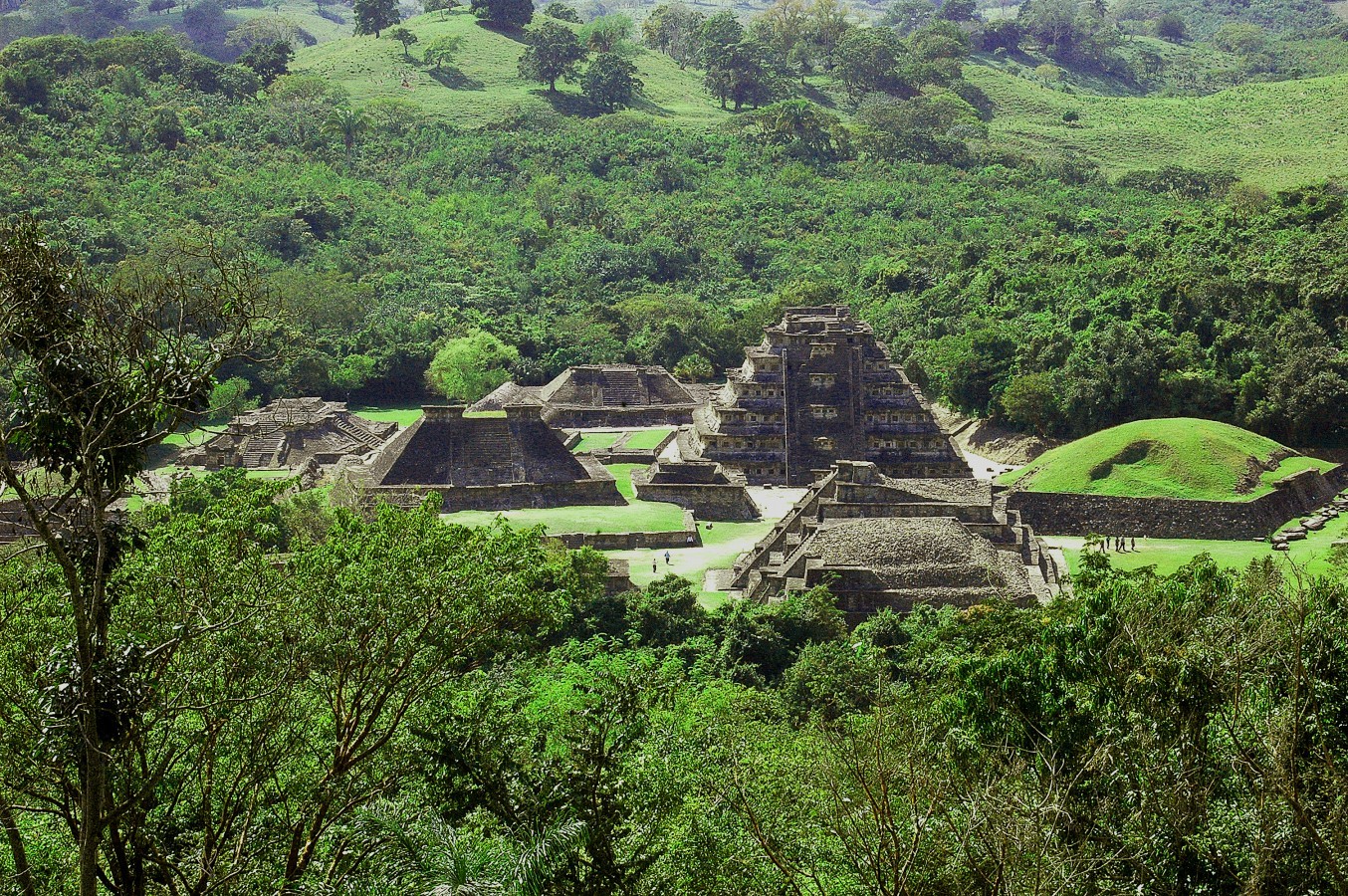Cultural affiliation
Totonaca

The Totonacapan
In Nahuatl the Totonacapan means the “place of hot climate,” while in Totonac it signifies “three hearts.” It is an extensive cultural region covering several municipalities in the states of Veracruz and Puebla. Its borders run from the banks of the river Cazones (Poza Rica), to the river Huitzilapan or La Antigua to the south, to the Gulf of Mexico to the east and the Sierra Norte de Puebla to the west in the vicinity of Huitzila, and from there to Pahuatlan, Acaxochitlan and Zacatlan, then back round from Jalacingo and Atzalan to the mouth of the river Huitzilapan. Although the Papantla region is Totonac, and emblematic of this culture, there is no mistaking the Nahuatl spoken here. This can be traced back to around 1461 when the Triple Alliance, the last confederation of indigenous states in the valley of Mexico consisting of Tenochtitlan, Texcoco and Tlacopan, established itself here, dividing the Totonacapan from the Huaxteca, the northern Totonac area.This area, which cuts across regions and cultures, was the home to various peoples and their cities at different times. The Totonacs themselves appear to have been relative latecomers, from around the year 800 AD. Sculptural elements such as the axe, the yoke and the palm are typical of the region. The ball game was an important feature of some settlements such as Tajin, where there were more than 20 structures built for this purpose. Cemeteries are the distinctive feature of others, such as the one at Cerro de los Metates, in front of what was the ancient Villa Rica of Veracruz.
Totonac architectural features identified by the archeologists include the use of Tajinesque elements such as cornices as well as friezes with fret patterns and columns, of which the clearest examples were at Tajin, Paxil Misantla and Cuajilote, respectively in the present day municipalities of Papantla, Misantla and Tlapacoyan in the state of Veracruz. Information indicating the use and social status of pre-Hispanic settlements can be gathered from their siting next to streams, rivers and hilltops or on adapted terrain far from running water, as well as the pattern, type of architecture and spaces, in addition to the fact that the Totonacapan as a whole supported itself on the basis of its agriculture.
Niches can be seen as symbolic representations of caves, which abounded in the region, in the Sierra Norte of the state of Puebla and in Yohualichan in the municipality of Cuetzalan. In fact there are three archeological sites featuring niche architecture and two of these are open to the public: Tajin and Yohualichan. At Yohualichan niches were used to represent numerous caves while at Tajin they were magnified as a decorative element. Other interesting Totonac culture sites are Cuyuxquihui in the municipality of Papantla and to the south the archeological sites of Las Higueras in the municipality of Vega de Alatorre and Cempoala in the municipality of Úrsulo Galván.
The inhabitants of these areas shared certain cultural features, mainly the Totonac and Nahuatl languages, similar forms of worship as well as certain feasts and rituals. It should be remembered that the territory inhabited by the Huastecs, Tepehua, Nahua and Otomi between the Transvolcanic Belt and the Sierra Madre Oriental is extremely diverse, going from a tropical environment with plentiful rivers to semi-desert.
There are other settlements in the region such as Castillo de Teayo with Mexica architecture, but even this pre-Hispanic settlement has a museum with sculpture found on the site with a strong Huastec style. A great many archeological sites have been recorded in the Totonac region, not all of which can be visited. A selection worth visiting would include Tajin, Cuyuxquihui, Paxil, Las Higueras, Quiahuiztlan and Cempoala. A tour of the Totonac region should also take in the site museums, the architecture and history of the pre-Hispanic settlements open to the public, the region’s cuisine as well as different religious dances and festivities and a sample of the ancient pre-Hispanic ceremonies.





